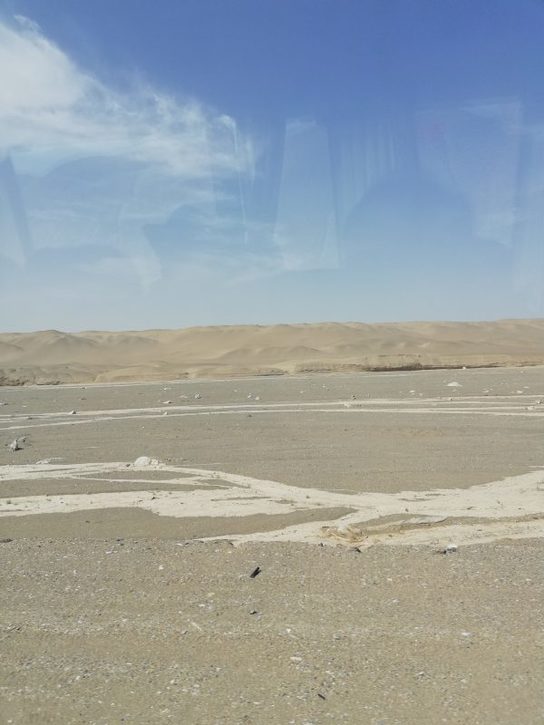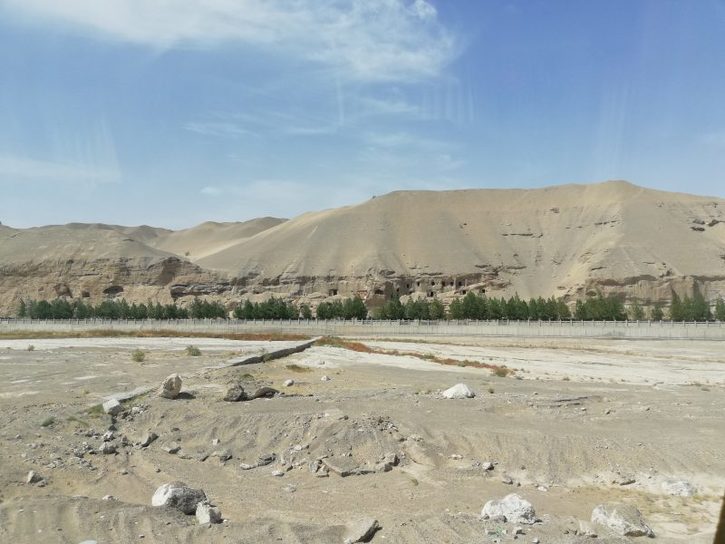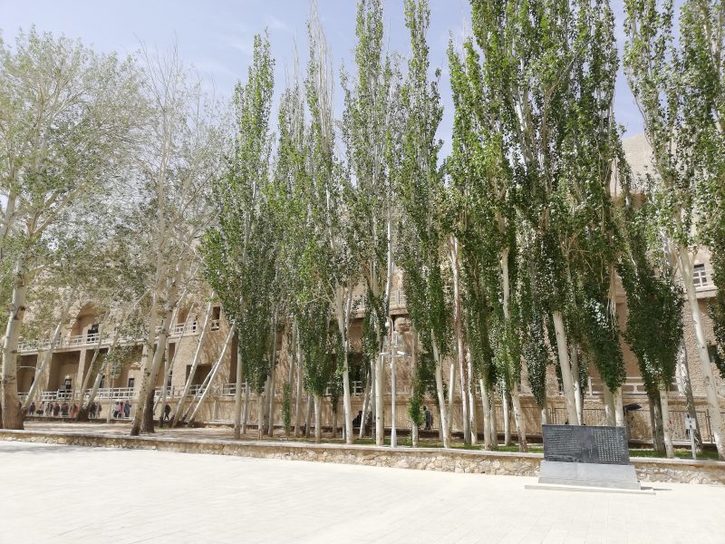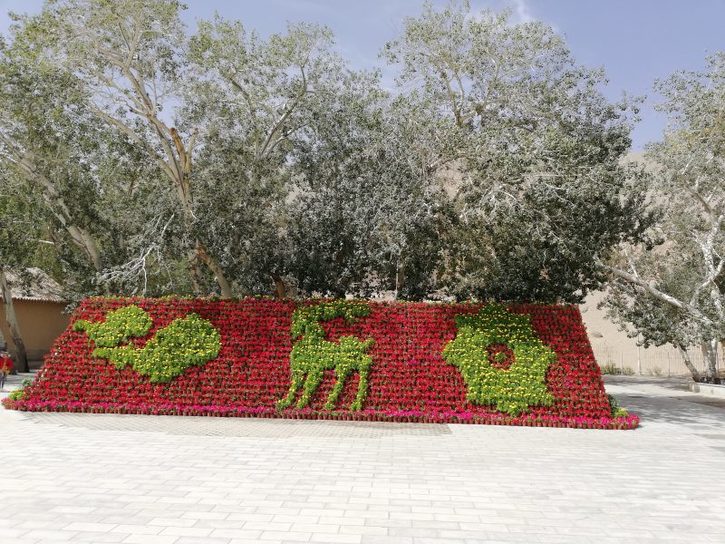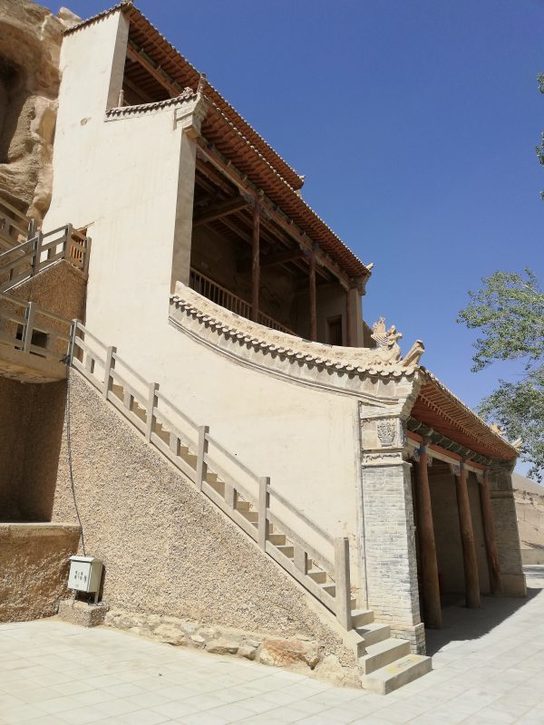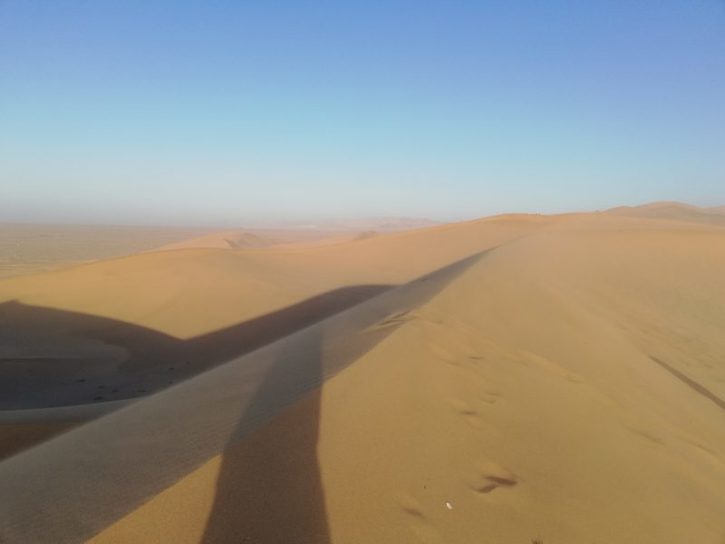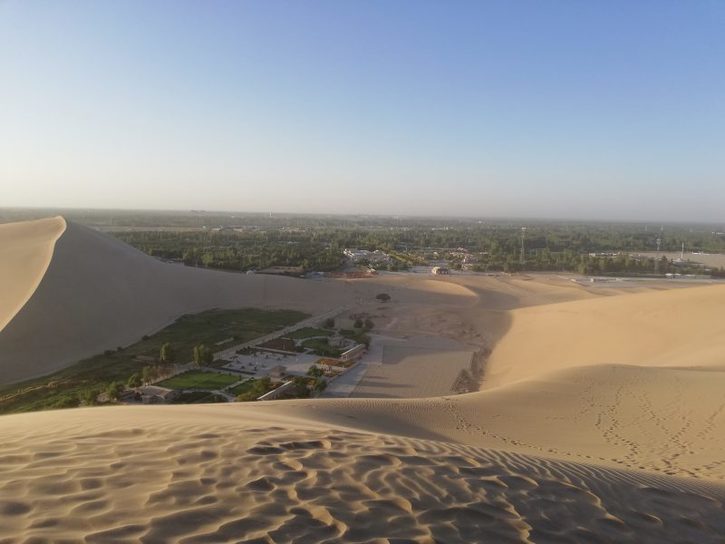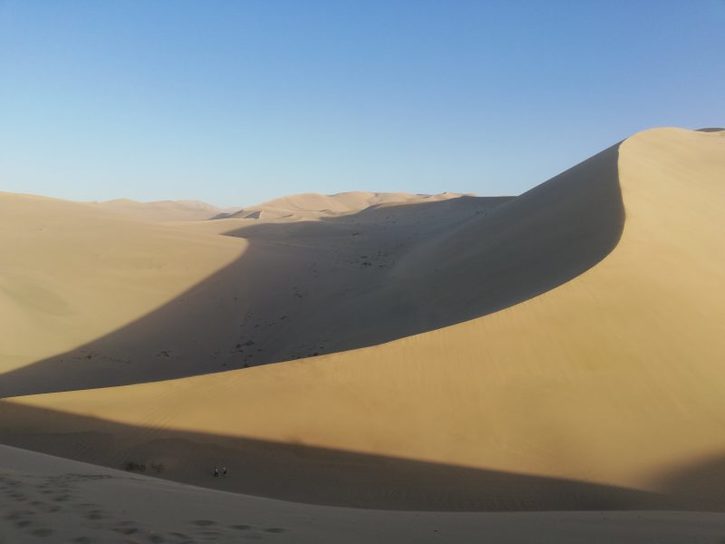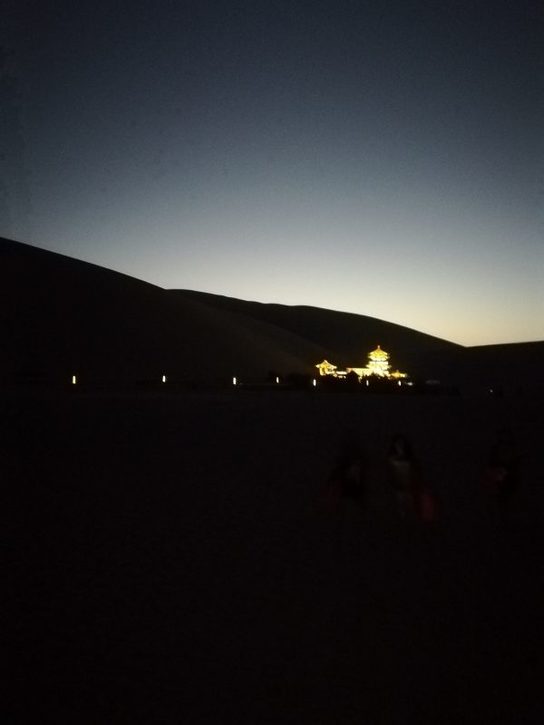The Mogao Grottoes were simply stunning. The first cave was cut in 366 AD by a monk to meditate in and subsequent travellers cut more caves painted with the most beautiful images of the Buddha. They were intended for the offering of prayers for protection from the dangers ahead on the Silk Road. On the northern route round the Taklamakan desert there were frequent attacks by tribesmen and bandits while the southern route crossed the waterless Desert of Lob which was inhabited by evil demons known as jinns. They would mimic human voices calling for help and entice travellers deeper and deeper into the desert until they got lost and died of thirst. According to the beautiful book “The Gobi Desert” this was still happening as recently as the 1920’s.
There are a total 492 caves of which 20 are open to the public. The first caves cut in the 4th and 5th centuries have a distinctly Indian aspect while most caves were cut during the Tang dynasty and the frescoes and statues of the three Buddhas (past present and future) as well as their disciples, boddhisatvas and apsaras (angels) are quite different. The guide (perhaps deliberately?) took us to the Library cave. An adjunct to a much larger cave, it was bricked up so that many thounands of ancient manuscripts dating back to 406 including the world’s first printed book, the Diamond Sutra of 868, could be hidden from thieves. The library was revealed when a wall cracked. In 1900 the self-appointed guardian of the caves, Abbot Wang, sold 20,000 manuscripts to Ariel Stein and others for £220, and the Chinese remain very angry about it.
We drove to the tourist service centre to buy the tickets which had been reserves for us by NAVO (only 6,000 people a day are allowed to visit the caves and they are booked up well in advance) and watched two films. One was a dramatic portrayal of the creation of the Silk Road and the dangers inherent in travelling along it. Camel caravans were attacked by Xiong Nu tribesmen or were buried under avalanches of rock. The second film showed some of the caves which ae not open to the public.
We then got onto a coach for a 25-kms journey to the caves and were shown round by an English-speaking guide who had a degree in Buddhist philosophy and art and seemed somewhat disappointed that we knew nothing about Buddhism. We saw the world’s second biggest Buddha statue cut into a rockface and protected by a surrounding structure, which spoiled the aspect. We then queued to see the Sleeping Buddha statue which was stunningly beautiful. A lovely experience.
In the evening, Jim, Sonia, Melody and Mathieu went to see a show about the Silk Road which would have cost us £66, so we went to se the Crescent Moon Lake and the singing sand dunes. The lake was beautiful, and the climb to the top of the dunes, perhaps 300 metres high up a 45 degree ladder in the sand was arduous but gave rewarding views of sand dunes and the Dunhwang oasis from the top.
